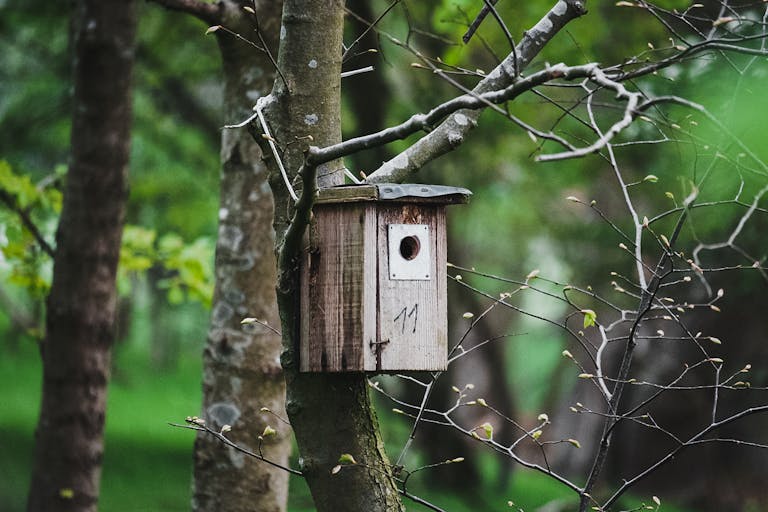7 Key Benefits of Aquatic Plants for Landscapes
When it comes to creating healthy, sustainable, and visually striking landscapes, aquatic plants are often overlooked in favour of hard landscaping features or traditional flower beds. Yet, these water-loving plants do far more than add beauty to ponds, lakes, wetlands, and water features. They actively improve biodiversity, enhance water quality, and create valuable habitats that support ecosystems.
Whether you’re a landscape architect, facilities manager, or commercial developer, understanding the benefits of aquatic plants for landscapes will help you design spaces that balance ecological responsibility with long-term functionality.
In this article, we’ll explore the many reasons aquatic plants are vital in UK landscaping, answering common questions and showing how they can add measurable value to projects of every scale.
Why Are Aquatic Plants Important in Landscaping?
Aquatic plants play an essential role in both natural and designed landscapes. They are not just decorative; they provide functional benefits, from stabilising water edges to filtering pollutants. Without them, many bodies of water would quickly become stagnant, lifeless, and unattractive.
Aquatic planting is now a critical element of sustainable landscaping, particularly in developments where environmental responsibility is a planning priority. Many contractors, such as Killingley’s marginal and aquatic planting services, now specialise in integrating water plants into large-scale commercial projects.
The 7 Major Benefits of Aquatic Plants
1. Improved Water Quality
Aquatic plants act as natural filters. Their roots absorb excess nutrients such as nitrogen and phosphorus, which can otherwise trigger harmful algal blooms. By reducing pollutants, aquatic plants maintain cleaner and clearer water, creating a healthier environment for both people and wildlife.
💧 Key point: A well-balanced water planting scheme can reduce algae growth by up to 60%, cutting the need for chemical treatments.
2. Enhanced Biodiversity
Introducing aquatic plants increases species diversity within landscapes. They provide food, breeding grounds, and shelter for fish, insects, birds, and amphibians. This contributes to the overall ecological resilience of a site.
🌱 Example: Marginal plants such as reeds and sedges create nesting zones for birds, while submerged plants like pondweed offer spawning sites for fish.
3. Natural Flood Management
The UK’s unpredictable weather and increased flooding risk make water management a pressing concern for local councils and developers. Aquatic plants help by slowing water movement and improving infiltration into the soil. Their dense root systems stabilise banks and reduce erosion, acting as a natural defence against flooding.
🌊 Statistic: Well-planted wetland zones can reduce surface water runoff by up to 30%.
4. Aesthetic and Commercial Value
A well-designed pond or water feature enhances the visual appeal of any development. Aquatic plants add texture, colour, and seasonal variety. From the delicate blooms of water lilies to the bold structure of bulrushes, they transform otherwise plain water bodies into eye-catching focal points.
🏞️ Benefit: Developments with attractive green and blue spaces see property values increase by 5–15%.
5. Low-Maintenance Landscaping Solution
Once established, aquatic plants require minimal upkeep compared to traditional lawns or flower beds. They self-seed, spread naturally, and continue to thrive with little intervention. This makes them a cost-effective long-term investment for commercial and public sites.
🔧 Practical insight: Selecting native UK species ensures plants adapt easily and are less prone to pests and diseases.
6. Support for Sustainable Drainage Systems (SuDS)
With SuDS becoming mandatory in many new developments, aquatic plants play a central role in filtering and slowing water flow. By integrating them into retention ponds, swales, and wetlands, developers can meet regulatory requirements while also boosting ecological value.
🌍 Tip: Combine aquatic planting with permeable paving and bioswales for maximum effectiveness.
7. Educational and Community Benefits
Aquatic landscapes often serve as outdoor classrooms and community spaces. They provide opportunities for schools, universities, and local groups to study ecology, biodiversity, and water management first-hand.
👩👩👦 Example: A landscaped pond in a public park can support environmental education programmes while encouraging local wildlife engagement.

Frequently Asked Questions
Are aquatic plants suitable for small landscapes?
Yes. Even small-scale projects such as courtyard water features or rooftop ponds benefit from carefully selected aquatic plants.
Do aquatic plants attract pests?
No. In fact, they help balance ecosystems by supporting species that control mosquito populations, such as dragonflies.
How quickly do aquatic plants establish?
Most marginal species establish within one season. Submerged plants may take slightly longer but often spread rapidly once rooted.
Can aquatic plants survive UK winters?
Yes. Native species are well adapted to UK climates. Hardy plants such as iris and rushes thrive even in frost conditions.
Information Table: Benefits at a Glance
| 🌿 Benefit | 💡 How It Helps |
|---|---|
| 💧 Water quality | Reduces algae and filters pollutants |
| 🐟 Biodiversity | Provides habitats for fish, birds, and insects |
| 🌊 Flood management | Slows runoff and stabilises banks |
| 🏞️ Visual appeal | Enhances landscape aesthetics |
| 🔧 Low maintenance | Requires minimal long-term care |
| 🌍 SuDS support | Assists in drainage compliance |
| 👨👩👧 Community | Creates education and engagement opportunities |
Conclusion
The benefits of aquatic plants for landscapes extend far beyond aesthetics. They are vital for water quality, biodiversity, flood resilience, and sustainable drainage. For developers, councils, and landowners across the UK, incorporating aquatic planting is no longer just an option – it’s an essential strategy for creating resilient, environmentally responsible spaces.
When planned and implemented correctly, aquatic plants transform landscapes into thriving ecosystems that deliver long-lasting value. Whether you are designing a commercial development, a park, or a public space, aquatic planting should be a central part of your strategy.
Killingley Insights is the editorial voice of NT Killingley Ltd, drawing on decades of experience in landscaping, environmental enhancements, and civil engineering projects across the UK.








